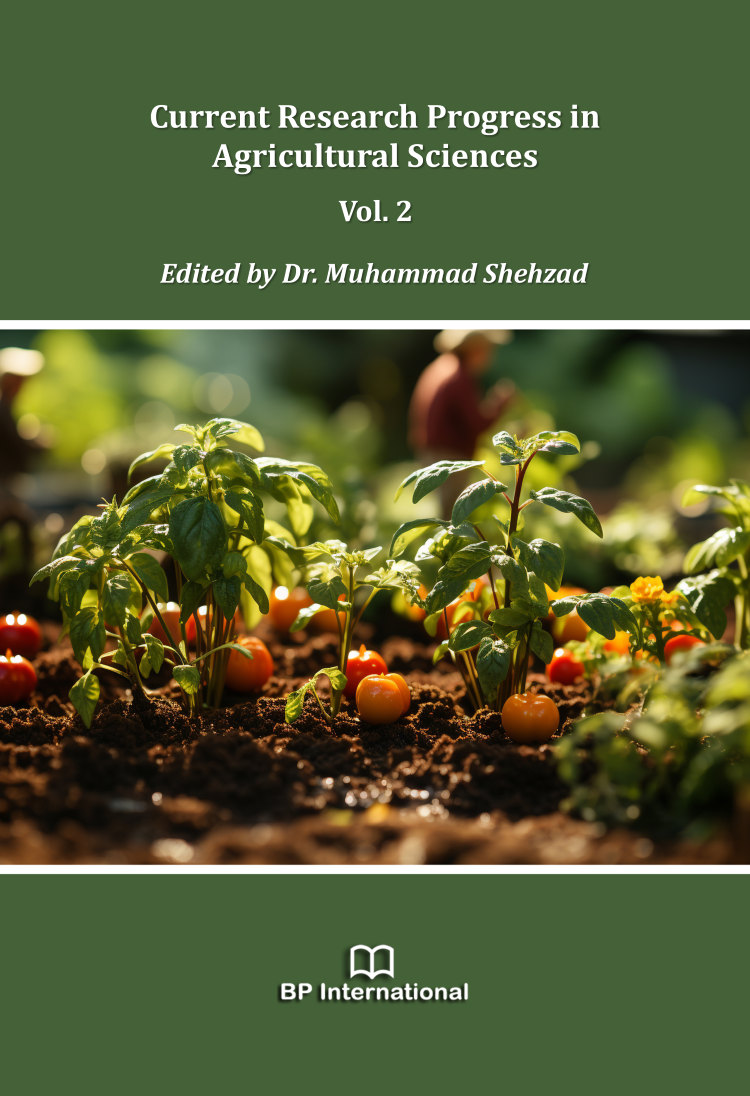Screening of New Developed Variety-Cross Hybrids and Resistance of Pearl Millet Hybrids to Four Isolates of Downy mildew (Sclerospora graminicola (Sacc.) Shroet.)
Current Research Progress in Agricultural Sciences Vol. 2,
8 July 2024,
Page 1-19
https://doi.org/10.9734/bpi/crpas/v2/261
Pearl millet is the only reliable source of food for many of the people living in the arid zones of India and Africa. This crop originated in tropical western Africa around 4500 years ago. Downy mildew is the most calamitous disease of pearl millet. Resistance to the pathogen is required to guarantee a stable harvest. Eight Open Pollinated Varieties belonging to two putative heterotic clusters were used to generate 16 variety-cross hybrids during the 2012 dry season in the INRAN station of Kollo. Pot-grown seedlings of parents, hybrids, and checks were inoculated with four isolates of Sclerospora graminicola under glasshouse conditions at the ICRISAT Centre in Sadoré. The analysis of data was carried out using GenStat to sort out the difference between plant genotypes and isolates. The isolates collected from different fields in Niger were not different from each other. The four isolates in contact with the parental OPVs as well as with the variety-cross hybrids incited similar mean disease incidence due to the related genetic makeup of both kinds of germplasm. Still, the isolate from Maradi showed the highest level of pathogenicity. Twelve hybrids and six parents were resistant over the 4 isolates with a mean disease incidence of less than 10%. Gamoji, one of the central varieties in the breeding program showed its highest disease incidence with the isolate from Maradi. Ex-Borno the highest resistant variety to the oomycete attack would be a good source of downy mildew tolerance under Niger growing conditions. Souna-3 and HKB showed the lowest General Combining Ability for the disease incidence. The hybrids Ankoutess x Souna-3 and Moro x HKP-GMS had the best Specific Combining Ability for disease resistance. There was a prevalence of additive gene action in terms of the inheritance of the resistance, also affected by epistatic effects. The resistant parents will be used for further pearl millet breeding activities. Because pearl millet constitutes the most important staple food particularly in Niger, screening for disease resistance should continue to identify valuable new germplasm, inbred lines, or else.
